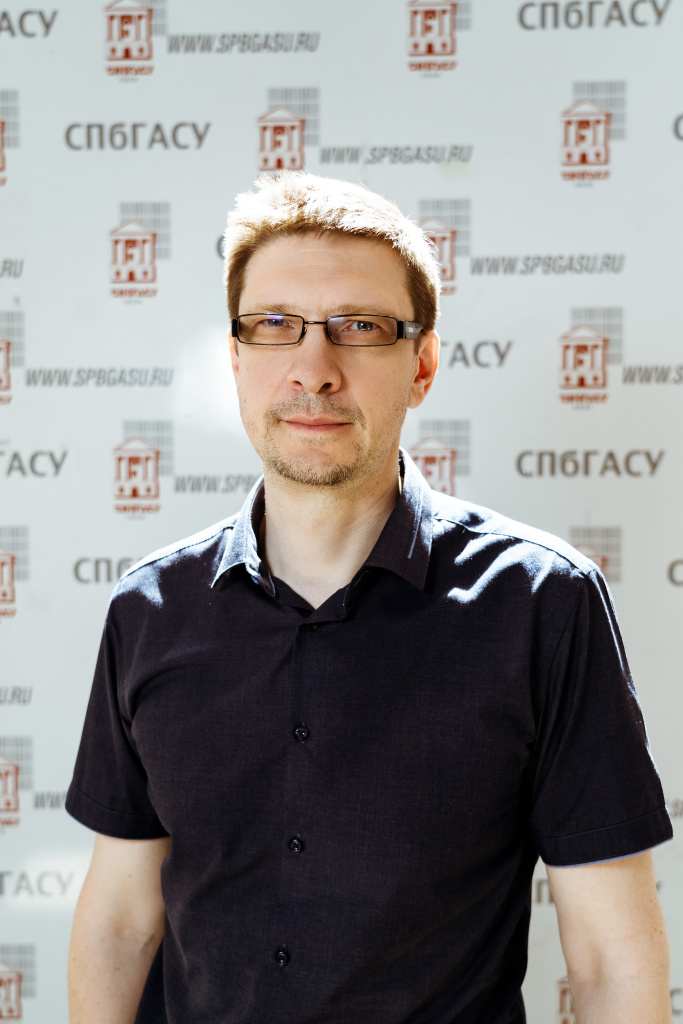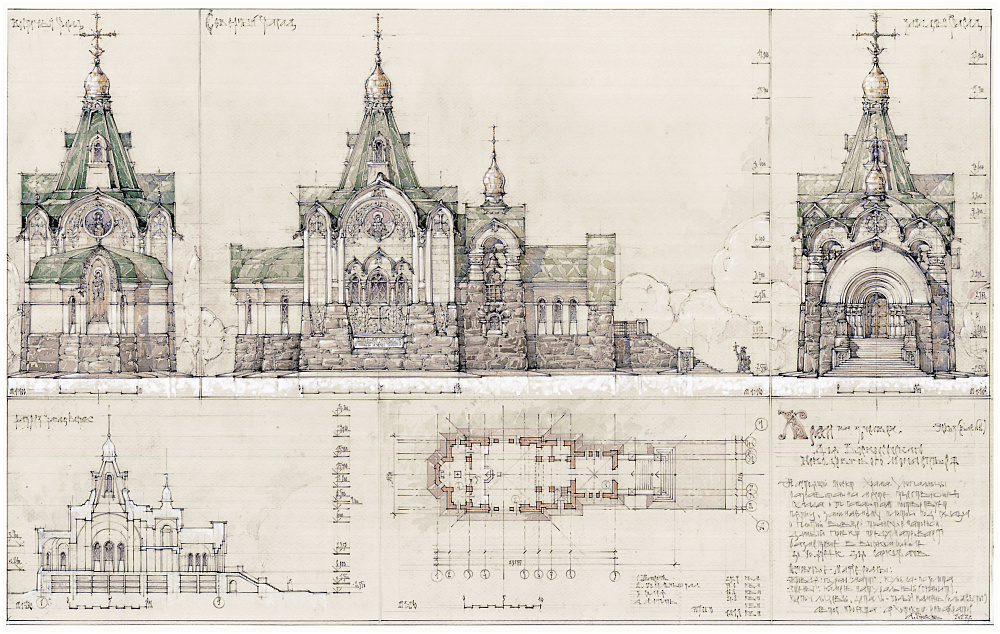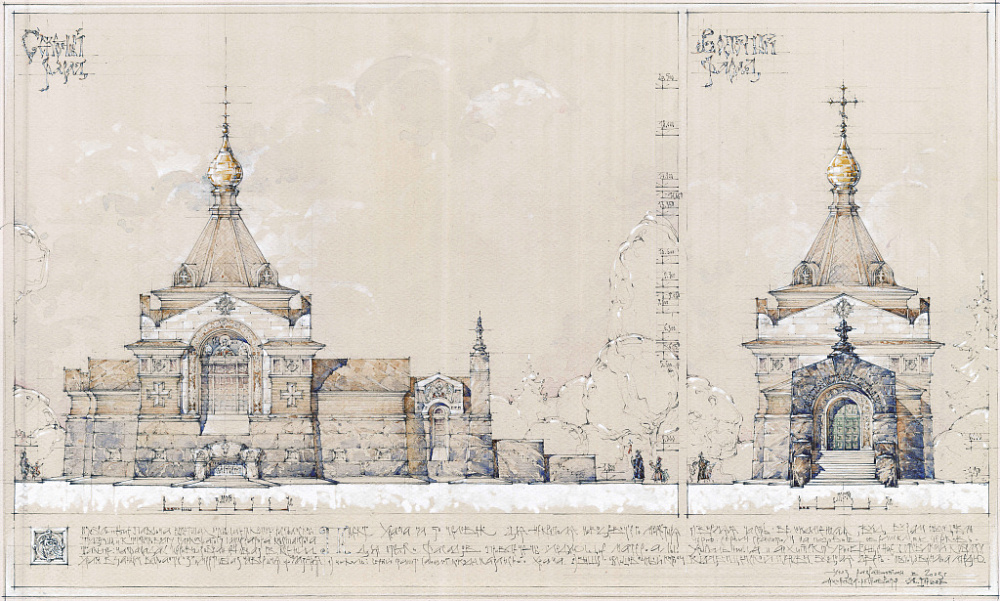 Aleksandr Gorshkov
Aleksandr Gorshkov
Until 15 July, an exhibition of contemporary church art, “Window to the Heavenly World,” will run in the gallery of the Main Temple of the Russian Armed Forces, located in the Patriot Park in the Moscow region. Among the exhibits are works by Aleksandr Gorshkov, a graduate of our university, associate professor at the SPbGASU Department of Architectural and Urban Planning Heritage, certified restoration architect of the highest category, member of the Union of Architects, founder and director of the Northwestern Restoration and Design Workshops.
We asked Aleksandr Grigorievich to tell us about his work and his favorite project.
– I have been involved in restoration work for more than 25 years. I participated in the restoration of the Bezborodko Palace, the Konstantinovsky Palace, the Tver Travel Palace, and the house of F. M. Sklyaev (the Reserve House of the Winter Palace - the laboratory and storage building of the Hermitage). My team and I worked in Pskov, Veliky Novgorod, Moscow, Ustyuzhna, Vytegra. All my projects are like children; is it possible to single out a favourite one among them? Perhaps the Church of St Nicholas on Lipna, erected in 1292 not far from Veliky Novgorod, is the very case when just touching the sacred stronghold that has survived centuries will fill you with excitement.
– What should a good restorer be able to do?
– A good restorer must thoughtfully conduct historical, archival and bibliographic research. He must also have composure in decisions, have a perfect knowledge of all the nuances of architectural style from antiquity to the present day, and must understand the intricacies of the building culture of previous eras. And, of course, not to show himself as an architect-creator in a restoration object, but to present this object to people in the most authentic and holistic form for perception. An equally important skill is to get used to the stylistic image of the era when the monument was erected, including through a good architectural drawing. Architectural drawing is special, specific. This is not painting, not graphics or drawing in their strict definition. Rather, it contains the features of all these genres and allows, in a way that is intelligible to the customer, to convey some very important fine line, which is the highlight of the object, to convey an invisible idea, deeper and broader than just a rational description of how to use a gigantic amount of construction materials.
– Did you have any mentors along your professional path who have influenced you as a professional?
– Even during the courses at the Preparatory Center of the SPbGASU Faculty of Architecture, I was attracted by architectural drawing by Georgiy Georgievich Kelkh. Low bow to him, without him I would not have chosen this profession. During the consultation process, he could, in seconds, draw on paper a sketch that perfectly depicted the architecture, space, and details. We, schoolchildren, watched in fascination as he confidently, with a steady hand, turned a simple sheet of paper into a living composition with precise architectural scenography. Yury Sergeevich Ushakov, Viktor Fedorovich Shapovalov and later Fedor Viktorovich Perov also played a big role in my development during my student years.
My first place of work was the St Petersburg Design Institute for the Restoration of Historical and Cultural Monuments “Lenproektrestavratsiya”, and my first director was Mikhail Vladimirovich Stepanov, an outstanding restoration architect and theorist who wrote a series of books on methods of proportioning in architecture. A year earlier, while working at the Lenoblrestavratsiya trust, I received a second higher education at the Institute of Restoration Art, founded by the Honored Architect of the Russian Federation Oleg Ivanovich Prutsyn. In 2004, I organized my own company, and Valery Pavlovich Lukin, the chief architect of the Hermitage, played a very important role in my development as a leader and organizer; I was lucky enough to meet him in 2001.
– Is it difficult to combine teaching and restoration work?
– It is very difficult to combine. After work at the university ends, I go to my office and work there until 11–12 p.m. Workshops carry out simultaneously several projects. Unfortunately, a lot of time often passes between the design cycle and the start of work, which is due to a number of factors - most often difficulties in the financial sphere, since restoration is a very expensive and slow business. Among the latest works are restoration projects as a separate part of project documentation on a subcontract for the largest organizations in our city: restoration of the facades of the Church of St Catherine on Nevsky Prospekt, the Church of the Holy Martyr Clement of Rome and Peter of Alexandria in Novaya Ladoga. We have passed the full cycle of approvals for the restoration project of the pastor's house at the Church of St Elizabeth in Kronstadt, and recently approved the working documentation as part of obtaining permission to work on the renovation of the Cathedral of St Mary of the Evangelical Lutheran Church of Ingria on Bolshaya Konyushennaya Street. In 2023, we completed an architectural project for the restoration (destroyed in 1929 to the foundation) of the Church of the Icon of the Mother of God “Joy of All Who Sorrow” at the Novodevichy Cemetery, known as “Karamzinskaya” for one of the leading and respected restoration firms in our city. Recently, there have been proposals to create new temple buildings in a style based on traditions and canons.
Of course, I don’t work alone: this is a team in which everyone knows his area of responsibility. All participants in the process, in addition to “working with beauty,” carry out a large amount of technical work - everyone in his place, it is the only way. My task is to put this kaleidoscope of events, figures, drawings together, present the customer with a product that meets the requirements of all sections, and at the same time not lose the original artistic idea of the entire project. So I can confidently advise students on this difficult but endlessly fascinating path. I share all my knowledge and experience with students in every lesson, I don’t hide anything. Of course, a lot has changed in 25 years. Now everything is not the same as it was in my student years. I, like my fellow teachers, have to compete with gadgets for students’ attention. I think I'm doing pretty well because many aspects of our profession simply can't be found on the Internet. First of all, this applies to those unwritten rules of interaction “client-architect-expertise-contractor”, which are developed only with experience.
– Please tell us about the works presented at the exhibition.
– The exhibition presents preliminary designs for churches that the Northwestern Restoration and Design Workshops have been working on recently: here are preliminary designs for the restoration of almost lost churches, sketches for the “Temple-Museum of One Icon” in the city of Toropets, and sketches for monument churches , tomb temples at necropolises. Also presented are sketches of the Temple in the name of St Nina Equal to the Apostles, which is expected to be built at the intersection of Bukharestskaya Street and Kozlovsky Lane in St Petersburg. The main task of preliminary designs is to convey to the customer the emotional and stylistic components of objects, to give an idea of coloristic, volumetric-spatial, style solutions.
The exhibition, presented at the Museum of the Temple of the Armed Forces, is intended to highlight the artistic component of modern Christian art: in addition to architectural projects, icons, sculptures, jewelry, ceramics and stone products, examples of calligraphy and vestments are presented here. The selection of works presented at the exhibition was carried out by art historians from the Andrey Rublev's Central Museum of Ancient Russian Culture and Art.











